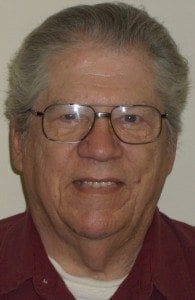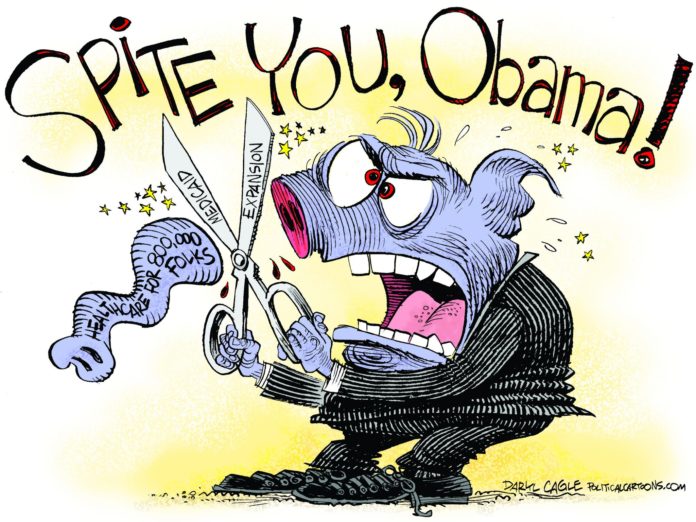BY KENNETH WELLS
 When discussing the state of and source of Oklahoma’s monetary income, there is little or no mention of portions of state tax monies paid to and returned to us by the federal government. The “small government” mentality of our conservative legislative majority in Oklahoma City does not want the citizens of Oklahoma to know the actual amount of federal funds that this state receives.
When discussing the state of and source of Oklahoma’s monetary income, there is little or no mention of portions of state tax monies paid to and returned to us by the federal government. The “small government” mentality of our conservative legislative majority in Oklahoma City does not want the citizens of Oklahoma to know the actual amount of federal funds that this state receives.
Records from the national Census Bureau show that the flow of federal monies received by Oklahoma have grown from 29% of the budget in 2001 to 36% in 2012. Because of the tax giveaways to corporations, energy production, and inequitable income tax cuts – plus population growth and inflation – Gov. Fallin and the Legislature have failed us at every level of government.
This same government readily requests disaster assistance from the federal government. They regularly receive federal funds for roads/bridges, airport and waterway maintenance and education. The only time federal money used by Oklahoma is mentioned is when Republicans want to “sell” us on the ridiculous idea that the federal government is trying to “tell us how to operate.”
Due to the Patient Protection and Affordable Care Act, the state receives only limited federal funding [mainly through individual block grants] because Oklahoma refuses to establish Medicare expansion. Not only would this provide more Oklahomans with health care, it would also stop a significant drain on the Department of Health Services budget.
The state’s 10% cost share would not be fully implemented for 10 years. For the first two years, the state has no cost whatever. The federal government will pick up the tab. Meanwhile, 180,000 minimum-wage working Oklahomans would have health care. [No more poor health standards for our governor to attempt to explain away.]
Our legislators have been “talking” to the news media about Oklahoma’s $611 million budget shortfall but have not attempted a serious discussion on ways to solve the problem.
Today, there are not enough days left in this legislative session to constructively pass a constitutionally required budget. The Legislature will patch one together, as they did last year, with even more and deeper cuts that left agencies with few options except to curtail services. Because of the lack of sufficient legislative votes to correct past mistakes, the only alternative left is to invent more ways to create “user fees” and to raise rates on fees already applied. While this type of tax is popular among the “no tax” advocates, it is the most inequitable form of taxation. Legislators who oppose raising taxes are re-elected while quietly implementing a tax raise on individuals through the “user fee” system.
With the same philosophical view, these legislators think nothing of providing tax welfare to businesses but refuse to provide sustaining welfare to Oklahoma’s neediest. This attitude is not exactly a “Love Thy Neighbor” philosophy!
And let us not forget: In “talking” about Oklahoma’s current $611 million shortfall, there is no mention that this is a deficit which is $423 million over the 2014-15 budget shortfall which was overcome by some “sleight-of-hand” accounting.
After last year’s budget, there is little money left in Oklahoma’s revolving funds. What remains is not nearly sufficient to correct ongoing, monumental mismanagement of our state’s budget!
State Rep. Richard Morrissette, D-OKC, has stated: “The outlook for the Fiscal Year 2016-17 state budget is even worse [than 2015-16]. A billion-dollar deficit next year would not be unexpected. If this was a household budget or a business, we’d be close to Chapter 7 insolvency.
“We need to look long-term instead of going session to session to session. We need to have five-year and 10-year outlook plans … and not worry about the political consequences of strong decisions. No matter who is running the show, we need to be talking about long-term financial planning at the state Capitol!”
– Kenneth Wells lives in Ratliff City, OK, and is a regular coccasional contributor to The Oklahoma Observer. His essays appear in newspapers across southwestern Oklahoma.








